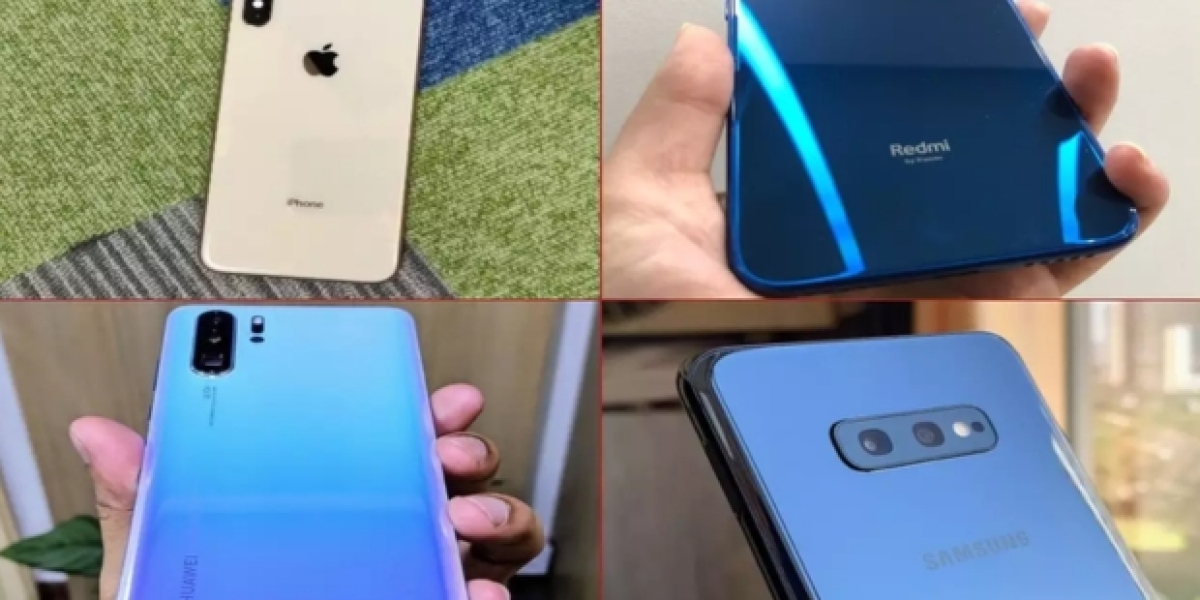Mobile phones have become an integral part of our daily lives, and the choice of the right brand can significantly impact our user experience. In this article, we'll delve into the top most used mobile brands globally, exploring their features, innovations, and the factors influencing their popularity.
Mobile brands refer to companies that manufacture and sell mobile phones under a specific brand name. These brands are known for their unique features, design, and technology.
I. Importance of Mobile Brands
The significance of mobile brands goes beyond mere communication devices. They reflect individual preferences, lifestyles, and technological advancements, making the selection process a crucial aspect for consumers.
II. Criteria for Evaluating Mobile Brands
Market Share
One of the key indicators of a mobile brand's success is its market share. A higher market share often signifies widespread acceptance and trust among consumers.
Customer Satisfaction
Customer satisfaction plays a vital role in determining the success of a mobile brand. Positive reviews and feedback contribute to the overall reputation of the brand.
Innovation and Technology
Leading mobile brands are often at the forefront of innovation. Technological advancements and cutting-edge features set these brands apart in the competitive market.
Design and Aesthetics
The visual appeal and design aesthetics of mobile phones contribute significantly to consumer preferences. Brands investing in sleek, modern designs often attract a broader audience.
III. Top Mobile Brands Worldwide
Apple
Overview
Apple, known for its iconic iPhone series, has consistently maintained a strong presence in the global market.
Key Features
- iOS operating system
- Seamless integration with Apple ecosystem
- High-quality cameras
Samsung
Overview
Samsung, a South Korean giant, offers a diverse range of smartphones catering to various consumer needs.
Key Features
- Android operating system
- AMOLED displays
- Extensive product lineup
Huawei
Overview
Despite facing challenges, Huawei remains a significant player, especially in the Asian market.
Key Features
- Leica-engineered camera systems
- EMUI operating system
- Focus on 5G technology
Xiaomi
Overview
Xiaomi, a Chinese brand, has gained popularity for its feature-rich smartphones at competitive prices.
Key Features
- MIUI operating system
- Value for money
- Continuous innovation
IV. Emerging Mobile Brands
OnePlus
Overview
OnePlus, a relatively new entrant, has made a mark with its flagship killer approach.
Key Features
- OxygenOS operating system
- Fast charging technology
- Community-focused approach
Oppo
Overview
Oppo, part of the BBK Electronics Corporation, focuses on innovative camera technologies.
Key Features
- ColorOS operating system
- AI-enhanced photography
- Stylish designs
Realme
Overview
Realme, a sub-brand of Oppo, targets the budget-conscious market with feature-packed smartphones.
Key Features
- Realme UI operating system
- High refresh rate displays
- Competitive pricing
V. Factors Influencing Mobile Brand Popularity
Marketing Strategies
Effective marketing campaigns significantly impact a brand's popularity. Brand visibility, endorsements, and advertising play a crucial role.
Pricing
Competitive pricing strategies attract a broader consumer base. Balancing features with affordability is a key factor.
Brand Loyalty
Brand loyalty is built through consistent quality, positive user experiences, and excellent customer service.
Global Presence
Brands with a global presence often have a broader market reach and appeal to diverse consumer preferences.
Also Read: Top Mobile Brands in the USA | Top Nokia Mobile Phones in USA |
VI. Mobile Brand Trends
5G Technology Integration
Mobile brands are increasingly integrating 5G technology to provide faster and more reliable connectivity.
Sustainability Initiatives
Brands focusing on eco-friendly practices and sustainability are gaining traction among environmentally conscious consumers.
Artificial Intelligence in Mobiles
The integration of AI enhances user experiences, offering features like smart assistants and facial recognition.
Foldable Phones
Innovations like foldable phones are reshaping the mobile industry, offering versatility and enhanced user experiences.
VII. Challenges Faced by Mobile Brands
Intense Competition
The mobile industry is highly competitive, with brands vying for consumer attention. Staying ahead requires continuous innovation.
Supply Chain Issues
Global supply chain disruptions can impact the availability of components, affecting production and distribution.
Changing Consumer Preferences
Understanding and adapting to evolving consumer preferences is crucial for sustained success.
VIII. Future Outlook for Mobile Brands
Predictions and Forecasts
Industry experts predict continued growth, with a focus on augmented reality, improved AI integration, and sustainable practices.
Industry Innovations
Innovations such as holographic displays, enhanced biometrics, and further AI advancements are anticipated in the near future.
In the ever-evolving world of mobile technology, choosing the right brand is a decision that goes beyond technical specifications. The topmost used mobile brands in the world have mastered the art of balancing innovation, design, and consumer satisfaction. As we look to the future, the mobile industry is poised for exciting developments that will continue to shape the way we connect and communicate.








